Shopvana: A successful agency built in less than a year with Gadget

The problem
The first Shopify app Tanmay Kejriwal ever built was a favor to a friend. As a college student looking to expand his skills, he had offered to help someone set up their online store. When they realized Shopify wouldn't let them backdate orders from weekend markets and events, Tanmay decided to build what he thought would be a quick custom Shopify app.
Unfortunately, it wasn't that easy. "It was brutal. The documentation was scattered, the dev community was small, and I was spending hours debugging basic things," Tanmay said. "The app just needed to make 5 API calls. But between OAuth, databases, and deployment scripts, this simple favor was consuming weeks of my time."
Shopify's technical requirements were overwhelming. Whether it was setting up OAuth, managing databases, or deploying with Heroku, every step required some new technology. For a college student with limited resources, building production-grade apps didn't seem like it was worth the hassle.
After spending weeks building a tool to backdate orders for accurate tax recording, the result was a bare-bones, single-page application. While functional, it lacked the robustness needed for production use, and it didn't even have a database. But not one to be dissuaded, Tanmay kept learning. He tackled more projects, even while the backend complexity and maintenance threatened to derail his ambitions of starting his own business.
The solution
Not long after his first app was up and running, Tanmay came across a hackathon. A company called Gadget was challenging developers to build and launch a Shopify app in just a week, claiming that Gadget's an all-in-one Shopify app development platform would make it easy. Initially, Tanmay was hesitant to learn an entirely new system. But as he explored the platform, the more it became apparent that Gadget's all-in-one solution would accelerate his overall productivity.
Tanmay spent a few days figuring out how Gadget worked. It was a different way of thinking about app development, but once he understood it, he was blown away. What had previously taken him weeks with traditional development now took mere minutes.
"I saw the vision," Tanmay explained. "I spent a few days reading through Gadget docs, and after a few more days of coding, I was able to launch Chatify. In one week I was way further than when I did everything myself. Gadget took care of all the painful parts."
His hackathon entry, Chatify, was an AI-powered customer support app with product upsells. It was far more sophisticated than his previous attempts, and it had been built in just 4 days. With Gadget, Tanmay had built his first full-stack app, with a complete database, proper scaling capabilities, and a managed Shopify connection. The same features that had taken him weeks to partially implement were now working flawlessly.
The platform provided a truly full-stack development experience, complete with database, read replicas, serverless Node.js backend, and more. But it was Gadget's built-in Shopify connection that had made all the difference. Because the platform handled OAuth setup, webhook processing, and database synchronization automatically, Tanmay had jumped straight to building features. Everything like security, multi-tenancy, and Shopify compliance was managed by the platform. Tanmay didn't have to waste a second of his time fighting with infrastructure.
After launching his hackathon app, Tanmay began building experiment after experiment. When he hit occasional limitations like needing background jobs before they were available, it wasn't long before the Gadget team would ship a solution, making the platform undeniably powerful. As his projects grew more complex, the platform evolved to meet those needs.
Once he had shipped a few apps, Gadget's standardized framework became his secret weapon. Because every Gadget project followed the same pattern, it was easy to start picking up custom development work. So Tanmay began taking on clients.
"If you give me any Gadget app, I know the first 60% of the code is going to look the same," Tanmay said. "I know exactly where everything is, so I can jump straight into building. That's the magic. You don't need to reinvent the wheel, you can just start moving."
The results
Tanmay's transformation happened faster than he could have imagined. Within months of discovering Gadget, he had launched a successful agency, built multiple revenue-generating apps, and achieved the financial independence to pursue any project he wanted. The platform didn't just accelerate his development, it fundamentally changed what was possible for a solo developer with big ambitions.
- 5x faster development: Projects that took 2-3 months traditionally were completed in 2-3 weeks
- Successful app exit: Grew Editify to hundreds of paying customers before acquisition
- Agency launch: Co-founded Shopvana with more client interest than they could handle
- Zero maintenance: Apps ran for months without code changes or infrastructure work
- Financial independence: Achieved sustainable revenue streams while still in his early career
A thriving agency
In 2024, Tanmay co-founded Shopvana, a development agency focused exclusively on Gadget-powered applications. They kicked off with a marketing campaign showcasing their development process, and the response was overwhelming. They immediately had more inbound interest than they could say yes to — the best problem a founder can have.
The efficiency gains Gadget gave them defined their business model. Projects that would take other teams two to three months could be completed in two to three weeks. The speed allowed them to offer fixed-price contracts at rates merchants could actually afford, while still maintaining healthy margins.
Community collaboration
Through Gadget's Discord community, Tanmay connected with entrepreneurs building the next generation of Shopify apps. His contributions to Ribbon (an app featured in Shopify's customer accounts launch) spanned ten months of development. Thanks to Gadget’s constant data syncs to Shopify, Tanmay was able to help the founders of KeepCart launch their app by marrying data from Gadget with a variety of other sources using background jobs. Despite the complex optimizations, it took Tanmay less than two hours to deliver a sophisticated weekly reporting system, complete with PDF generation and automated emails.
His first major client project started as a custom bundling solution for a single merchant. Despite its complexity (multiple screens, intricate logic, various extensions) the entire build took less than two and a half months. The client was so happy with the app, they decided to take it public.
Financial freedom
Gadget's pricing model changed how Tanmay approached building apps. With everything in one tool, his costs were predictable. He could experiment freely, knowing that successful apps would scale automatically while failed experiments cost almost nothing.
"Without Gadget, I'd be dealing with Heroku, database scripts, scaling issues, cloud configurations," Tanmay explained. "Instead, I focus entirely on solving merchant problems and shipping features."
This freedom enabled him to work on multiple projects simultaneously—impossible with traditional development where each app would require its own infrastructure maintenance. While other developers spent weeks onboarding to new codebases, Tanmay could contribute to any Gadget project immediately.
A successful acquisition
One of Tanmay's many experiments led to the launch of his app Editify. In just a few months, it grew to hundreds of paying customers. With Gadget handling all the maintenance and infrastructure, Tanmay was free to focus on other projects, expand his portfolio, and diversify his revenue streams. The app practically ran itself, which made it an attractive acquisition target, and in August 2025, Tanmay was able to sell the app to an entirely new owner.
"We didn't push code for about two months to Editify and it was just running automatically," he reflected. "We could truly sleep peacefully at night. No alerts, no crashes, no emergency fixes."
The acquisition took 21 days of due diligence and extensive documentation, but the technical transfer itself was remarkably simple. With just a message to Gadget support, he was able to hand off ownership. Tanmay agreed to provide a month of support after the sale, but the new owner barely needed help. The app kept running smoothly, just as it had for months. Knowing he could hand off a working business without worrying about infrastructure breaking down was liberating, and the sale gave him both the validation he needed and the financial cushion to tackle bigger challenges.
Professional transformation
Today, having achieved financial independence through his Gadget-powered ventures, Tanmay is working on even more complex challenges. The holistic systems thinking he learned through Gadget now shapes how he approaches building developer tools for others, and as a result, he has plans to build an AI coding platform for mobile applications.
Gadget gave Tanmay something invaluable: the ability to build like a senior developer while learning like a junior one. Less than two years after that first brutal attempt at Shopify development, Shopvana stands as proof that with the right platform, minimal resources don't mean minimal ambitions.








